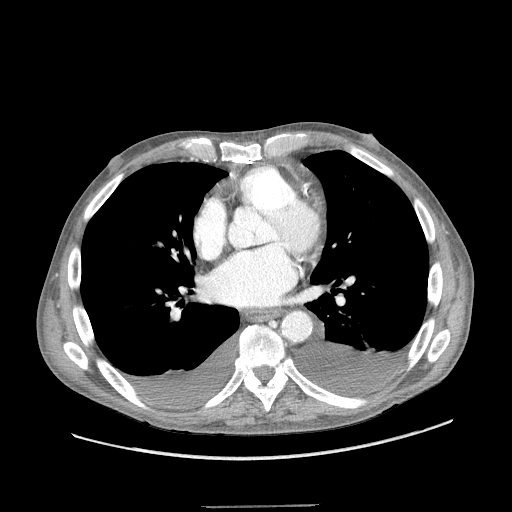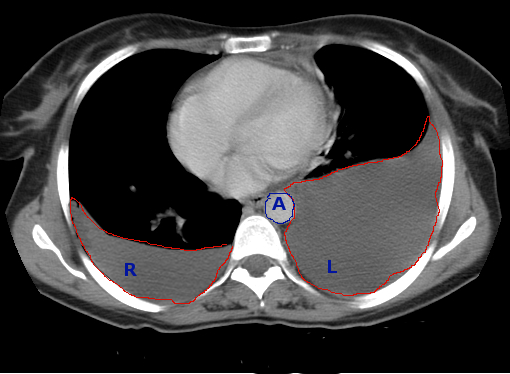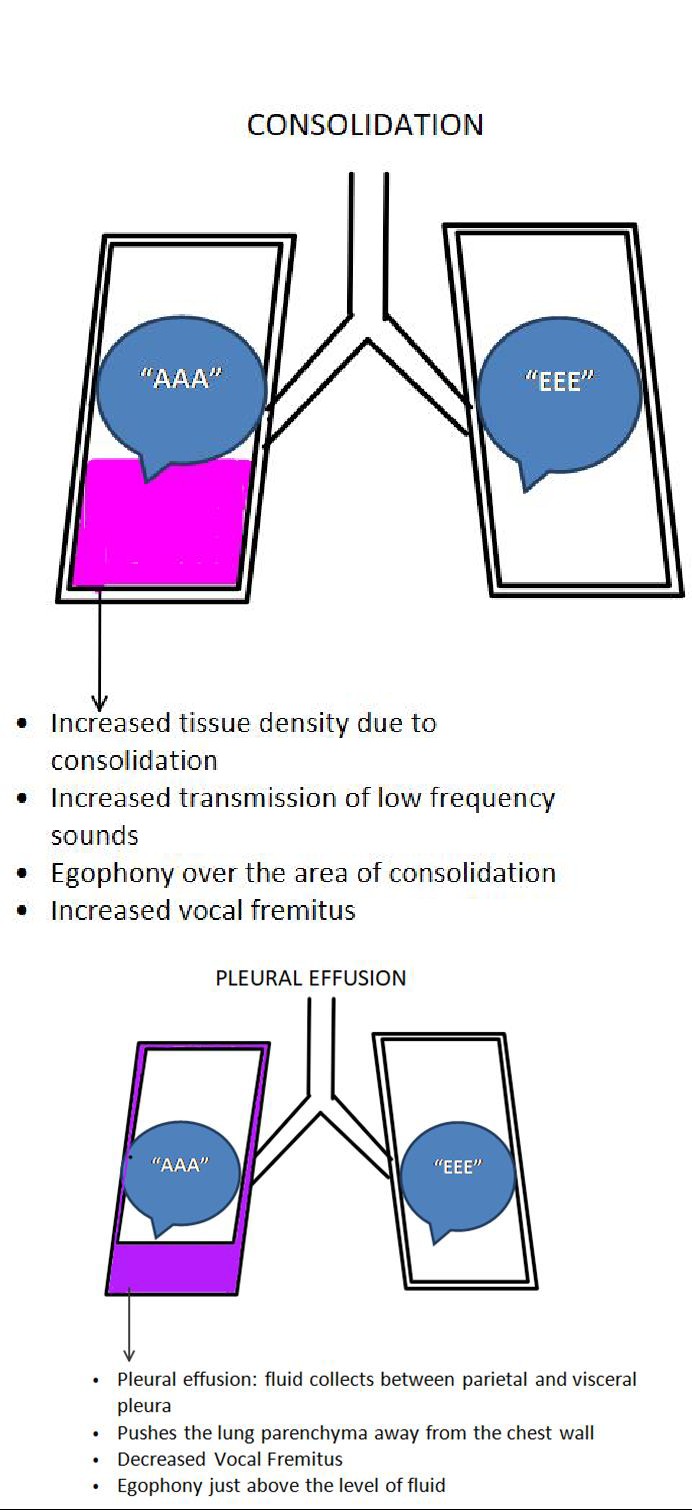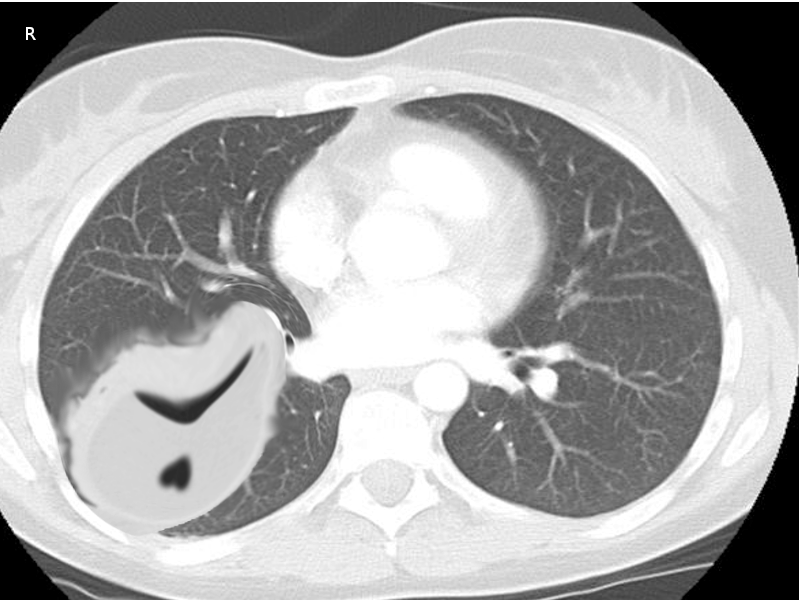[1]
Light RW, Girard WM, Jenkinson SG, George RB. Parapneumonic effusions. The American journal of medicine. 1980 Oct:69(4):507-12
[PubMed PMID: 7424940]
[2]
Light RW. Parapneumonic effusions and empyema. Proceedings of the American Thoracic Society. 2006:3(1):75-80
[PubMed PMID: 16493154]
[3]
Aquino SL, Webb WR, Gushiken BJ. Pleural exudates and transudates: diagnosis with contrast-enhanced CT. Radiology. 1994 Sep:192(3):803-8
[PubMed PMID: 8058951]
[4]
Tsang KY, Leung WS, Chan VL, Lin AW, Chu CM. Complicated parapneumonic effusion and empyema thoracis: microbiology and predictors of adverse outcomes. Hong Kong medical journal = Xianggang yi xue za zhi. 2007 Jun:13(3):178-86
[PubMed PMID: 17548905]
[5]
Bartlett JG, Gorbach SL, Thadepalli H, Finegold SM. Bacteriology of empyema. Lancet (London, England). 1974 Mar 2:1(7853):338-40
[PubMed PMID: 4131173]
[6]
Jerng JS, Hsueh PR, Teng LJ, Lee LN, Yang PC, Luh KT. Empyema thoracis and lung abscess caused by viridans streptococci. American journal of respiratory and critical care medicine. 1997 Nov:156(5):1508-14
[PubMed PMID: 9372668]
[7]
Grijalva CG, Zhu Y, Nuorti JP, Griffin MR. Emergence of parapneumonic empyema in the USA. Thorax. 2011 Aug:66(8):663-8. doi: 10.1136/thx.2010.156406. Epub 2011 May 26
[PubMed PMID: 21617169]
[8]
McCauley L, Dean N. Pneumonia and empyema: causal, casual or unknown. Journal of thoracic disease. 2015 Jun:7(6):992-8. doi: 10.3978/j.issn.2072-1439.2015.04.36. Epub
[PubMed PMID: 26150912]
[9]
Dean NC, Griffith PP, Sorensen JS, McCauley L, Jones BE, Lee YC. Pleural Effusions at First ED Encounter Predict Worse Clinical Outcomes in Patients With Pneumonia. Chest. 2016 Jun:149(6):1509-15. doi: 10.1016/j.chest.2015.12.027. Epub 2016 Jan 16
[PubMed PMID: 26836918]
Level 2 (mid-level) evidence
[10]
Svigals PZ, Chopra A, Ravenel JG, Nietert PJ, Huggins JT. The accuracy of pleural ultrasonography in diagnosing complicated parapneumonic pleural effusions. Thorax. 2017 Jan:72(1):94-95. doi: 10.1136/thoraxjnl-2016-208904. Epub 2016 Sep 9
[PubMed PMID: 27613540]
[11]
Waite RJ, Carbonneau RJ, Balikian JP, Umali CB, Pezzella AT, Nash G. Parietal pleural changes in empyema: appearances at CT. Radiology. 1990 Apr:175(1):145-50
[PubMed PMID: 2315473]
[12]
Colice GL, Curtis A, Deslauriers J, Heffner J, Light R, Littenberg B, Sahn S, Weinstein RA, Yusen RD. Medical and surgical treatment of parapneumonic effusions : an evidence-based guideline. Chest. 2000 Oct:118(4):1158-71
[PubMed PMID: 11035692]
Level 1 (high-level) evidence
[13]
Chung CL, Hsiao SH, Hsiao G, Sheu JR, Chen WL, Chang SC. Clinical importance of angiogenic cytokines, fibrinolytic activity and effusion size in parapneumonic effusions. PloS one. 2013:8(1):e53169. doi: 10.1371/journal.pone.0053169. Epub 2013 Jan 7
[PubMed PMID: 23308155]
[14]
Porcel JM, Bielsa S, Esquerda A, Ruiz-González A, Falguera M. Pleural fluid C-reactive protein contributes to the diagnosis and assessment of severity of parapneumonic effusions. European journal of internal medicine. 2012 Jul:23(5):447-50. doi: 10.1016/j.ejim.2012.03.002. Epub 2012 Mar 23
[PubMed PMID: 22726374]
[15]
Lee MS, Oh JY, Kang CI, Kim ES, Park S, Rhee CK, Jung JY, Jo KW, Heo EY, Park DA, Suh GY, Kiem S. Guideline for Antibiotic Use in Adults with Community-acquired Pneumonia. Infection & chemotherapy. 2018 Jun:50(2):160-198. doi: 10.3947/ic.2018.50.2.160. Epub
[PubMed PMID: 29968985]
[16]
Jerjes-Sánchez C, Ramirez-Rivera A, Elizalde JJ, Delgado R, Cicero R, Ibarra-Perez C, Arroliga AC, Padua A, Portales A, Villarreal A, Perez-Romo A. Intrapleural fibrinolysis with streptokinase as an adjunctive treatment in hemothorax and empyema: a multicenter trial. Chest. 1996 Jun:109(6):1514-9
[PubMed PMID: 8769503]
Level 1 (high-level) evidence
[17]
Gilbert CR, Gorden JA. Use of intrapleural tissue plasminogen activator and deoxyribonuclease in pleural space infections: an update on alternative regimens. Current opinion in pulmonary medicine. 2017 Jul:23(4):371-375. doi: 10.1097/MCP.0000000000000387. Epub
[PubMed PMID: 28399008]
Level 3 (low-level) evidence
[18]
Cassina PC, Hauser M, Hillejan L, Greschuchna D, Stamatis G. Video-assisted thoracoscopy in the treatment of pleural empyema: stage-based management and outcome. The Journal of thoracic and cardiovascular surgery. 1999 Feb:117(2):234-8
[PubMed PMID: 9918962]
[19]
Pan H, He J, Shen J, Jiang L, Liang W, He J. A meta-analysis of video-assisted thoracoscopic decortication versus open thoracotomy decortication for patients with empyema. Journal of thoracic disease. 2017 Jul:9(7):2006-2014. doi: 10.21037/jtd.2017.06.109. Epub
[PubMed PMID: 28840000]
Level 1 (high-level) evidence
[20]
Ng CS, Wan S, Lee TW, Wan IY, Arifi AA, Yim AP. Post-pneumonectomy empyema: current management strategies. ANZ journal of surgery. 2005 Jul:75(7):597-602
[PubMed PMID: 15972055]
[21]
Rahman NM, Kahan BC, Miller RF, Gleeson FV, Nunn AJ, Maskell NA. A clinical score (RAPID) to identify those at risk for poor outcome at presentation in patients with pleural infection. Chest. 2014 Apr:145(4):848-855. doi: 10.1378/chest.13-1558. Epub
[PubMed PMID: 24264558]
[22]
Martínez MA, Cordero PJ, Cases E, Sanchis JL, Sanchis F, Ferrando D, Perpiñá M. [Prognostic features of residual pleural thickening in metapneumonic pleural effusion]. Archivos de bronconeumologia. 1999 Mar:35(3):108-12
[PubMed PMID: 10216741]
Level 3 (low-level) evidence





